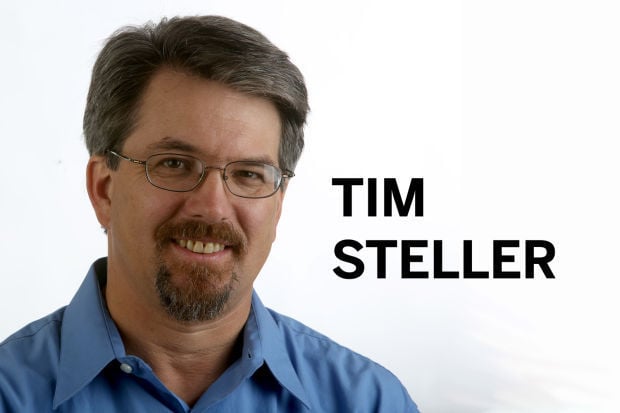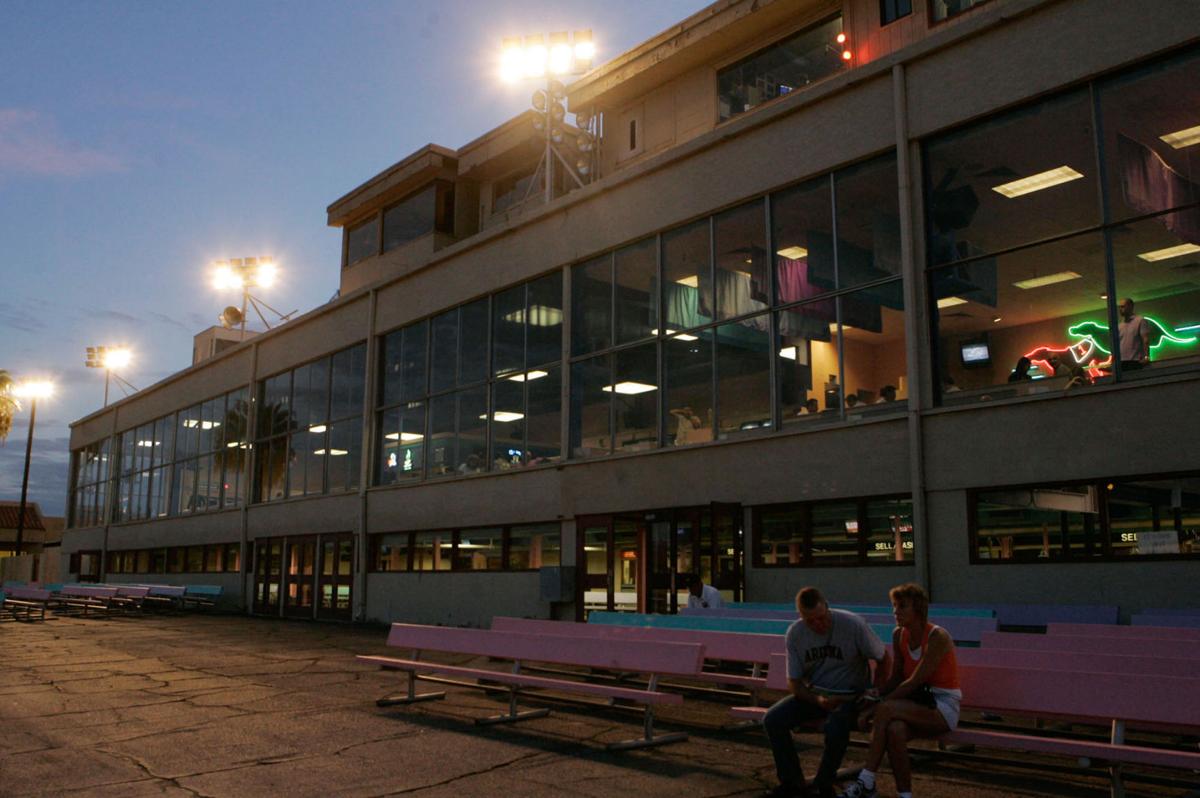The countdown has begun to the day when Tucson Greyhound Park will be a video gambling hall with a big dirt lot in front.
On Friday, Gov. Doug Ducey signed bills ending live dog racing in Arizona. In South Tucson, that means the last greyhounds will round the track on about June 24 and some of the park’s 100 employees will be laid off.
Paradoxically, that should be when the economic revival of South Tucson begins. Whether it actually happens will say a lot about the long-term viability of the tiny “Pueblo within a City.”
That’s because the potential of the land from East 36th Street down to Interstate 10, including the racetrack, is vast, acknowledged and untapped. It includes wide open space in the middle of the metro area with close access to two freeway interchanges.
Now, with the end of live racing, the owners of the track will simply continue with off-track betting. That opens up the options even more.
“They don’t have to continue at the track property,” lobbyist Michael Racy, who represented the track owners at the Capitol, told me.
The owners of the track themselves have pieced together some parcels in the area that they could either develop or sell to a new developer. But there are other, vast swaths closer to Interstate 10.
“There is a giant area that is ripe for much, much more intensive productive use,” Racy said. “Regionally, we ought to be able to figure out a way to help that property.”
In total, the redevelopable area there adds up to about 60 acres, former South Tucson City Manager Luis Gonzales told me. A couple of going concerns sit in the middle: Borderland Construction’s headquarters and a Holsum Bakery Outlet. But they could be accommodated.
In a fully functioning, financially stable city, government officials could help foster the redevelopment project. One way would be to persuade the state Legislature to allow a special taxing district in that area.
But this is South Tucson. Just collecting the garbage and keeping the city out of bankruptcy has been a challenge. Plus, the elected leaders are in a state of constant turnover, thanks to its endemic factionalism and the resulting recall elections. I’ve argued the 1-square-mile city, with its 6,000-or-so residents, simply isn’t viable any more.
Unfortunately, that’s not the only obstacle. Dennis Luttrell, owner of the vacant Spanish Trail motel and adjacent properties along Interstate 10, has not been interested in selling.
He’s taken a lot of heat over the years about the deteriorated condition of his hotel and the tall, busted-up sign that makes for an ugly welcome to Tucson. I’ve been one of his critics. He doesn’t talk to reporters, but his wife, Rita Luttrell, told me they are not actively trying to unload the property now. In addition to the broken-down motel, there are existing rental apartments on their property.
Rita Luttrell told me a couple of years ago that they’d hoped to attract a big-box store to the property, and indeed that would have been a good site for one. But now there are a Walmart and a Costco just a half-mile southeast at the Bridges property along I-10. It’s turned into an unlikely catch.
Asked about selling, the most enthusiasm she could muster was to say, “We could, maybe.”
That’s too bad for South Tucson, which relies mostly on sales tax for its public revenue.
The good news, though, is that under current zoning, the property could be good for almost anything: retail, housing, entertainment, light industrial.
Gonzales had tried to spark redevelopment of that area before he left in 2014.
“When I left there, there were still some discussions going on with possible investors and developers,” he said. “The ideal way to put it together would be to have one owner, or maybe a partnership between the city and an investor that would make it easier to develop.”
There also was $5 million in the Pima County bond package to be used for spurring retail development there. But, of course, that package didn’t pass.
The acting city manager in charge now, Veronica Moreno, told me she plans to reintroduce to the City Council a plan for incentives in that corridor.
“That whole area there along Fourth Avenue is wonderful for business development,” she said. Now that racing is going away, “it opens up the opportunity even more.”
That’s true, it does. A viable city — if that’s what South Tucson is — will find a way to take advantage of it.








